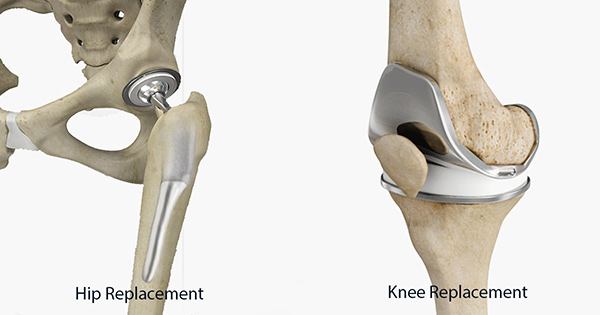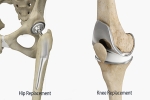
For most patients the key question when having a hip or knee replacement is "How long will it last?"
It is now easy for Australian surgeons to answer this question thanks to the long term data on revision rates recorded by the Australian Orthopaedic Association National Joint Replacement Registry (AOANJRR). A revision is when an operation is performed to change one or more joint replacement components due to complications or other issues with the joint. The latest report shows that the average revision rate of hip and knee replacements at 20 years is approximately 5-10%. There is however a lot of variation depending on the implant used and the surgeon.
The AOANJRR provides probably the best post-market surveillance of hip and knee replacements in the world. It is based at the South Australian Health and Medical Research Institute (SAHMRI) in Adelaide and funded by the federal government. This organisation has recorded over 98% of primary and revision hip and knee replacements performed in Australia since 1999 and now has data on over one million procedures. Retaining such extensive data enables long-term review of the rate of revision surgery of different types of hip and knee replacements in very large numbers of patients.
An orthopaedic surgeon’s revision rate is partly a function of surgical ability and experience, but also influenced by decisions they make about implant choice. Surgeons can look at their own individual data and compare this to the national data to help with ongoing quality improvement.
Orthopaedic surgeons are able to provide you with their own personal results from the AOANJRR. I have chosen to make my results publicly available:
http://www.adrianbauze.com.au/clinical-outcomes.html
Information about hip and knee replacement surgery in the media is often focussed on new techniques and such as robotic assisted surgery and minimally invasive approaches. These techniques have potential benefits and I use them regularly, however there is no evidence so far that they offer any improvement in long term outcomes.
Some examples of choices that have been proven to reduce revision rates are:
Total Knee Replacement
- Partial knee replacements are revised more often than total knee replacements over the long term. A major cause is progression of arthritis to other compartments and these implants must be used with caution.
- Resurfacing of the patella (kneecap) reduces the risk of revision surgery.
- Computer Navigation to help align implants reduces the risk of revision in younger patients.
Total Hip Replacement
- Metal bearing hip replacements and hip resurfacing perform worse than conventional hip replacements.
- Use of a cemented femoral stem in older patients reduces the risk of revision surgery mainly due to reduced femoral fracture.
- Utilising a femoral head size of >=32mm reduces the risk of revision due to dislocation.
- New research I have presented to the Australian Orthopaedic Association shows that using a hooded polyethylene liner further reduces the risk of revision surgery for both dislocation and loosening/lysis.
These are simple choices all orthopaedic surgeons can make that significantly improve long-term outcomes. To ensure the best possible outcome, talk to your surgeon about what really matters in hip and knee replacements.
For more information please click on the following links:
My personal results - http://www.adrianbauze.com.au/clinical-outcomes.html
Hip Replacements - http://www.adrianbauze.com.au/hip-replacement-procedures.html
Knee Replacements - http://www.adrianbauze.com.au/knee-replacement-procedures.html
Dr Bauze is chairman of the Clinical Audit and Clinical Outcomes committee at SPORTSMED·SA and coordinates the annual Australian Orthopaedic Association National Joint Replacement Registry (AOANJRR) review at SPORTSMED∙SA. He is also involved in collaborative research projects with the AOANJRR and South Australian Health and Medical Research Institute (SAHMRI).







